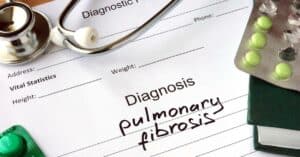Oxygen saturation refers to the amount of oxygen that’s in your bloodstream. The body requires a specific amount of oxygen in your blood to function properly.
The normal range of oxygen saturation for adults is 94 to 99 percent.
Anyone with an oxygen saturation level below 90 percent will likely require supplemental oxygen, which is prescribed by your primary care doctor or pulmonologist.
A Deeper Look at Oxygen Saturation
On a deeper level, oxygen saturation refers to the degree to which the hemoglobin in your red blood cells has bonded with oxygen molecules.
Oxygen in the bloodstream comes from your lungs and is taken in when you inhale.
There are two common ways of measuring oxygen saturation: an arterial blood gas (ABG) test and a pulse oximeter. Of the two, the pulse oximeter is more commonly used.
The ABG Test
An ABG test measures the amount of oxygen and carbon dioxide present in the bloodstream and can be used to help diagnose COPD.
It can also determine the acidity, or pH, of your blood. When you inhale, oxygen flows into the blood and is carried via red blood cells throughout your body.
Carbon dioxide, on the other hand, flows out of the blood and back into the lungs.
An ABG test can reveal how effectively your lungs bring oxygen into the bloodstream and remove carbon dioxide from the bloodstream.
An ABG test takes only a few minutes to complete and requires a small blood sample. Once drawn from the body, the blood sample is analyzed in a portable machine or laboratory.
The blood sample must be analyzed within 10 minutes of extraction to ensure an accurate reading.
Test results for people with COPD will reveal a decrease in pH and oxygen in the blood and an increase in carbon dioxide.
A recent study, however, found that continuous COPD treatment can slow the progression of decline in these areas and can also help reduce the number of exacerbations.
The Pulse Oximetry Test
A pulse oximeter clips onto your finger and indirectly measures oxygen saturation. It shines light beams into the blood circulating in your capillaries, which reflects the amount of oxygen in the blood.
Pulse oximeter readings are expressed as a percentage.
As stated above, a reading of 94 to 99 percent indicates normal oxygen saturation, and anything below 90 percent is considered low blood oxygen, also known as hypoxemia.
What can I do about my Oxygen Saturation Level?
If you have low oxygen saturation, the good news is that you can work to improve your oxygen saturation levels.
Using supplemental oxygen, eating healthy foods and regular exercise are three ways to directly improve your blood oxygen saturation levels.
3) Exercise
Regular exercise may also improve oxygen saturation levels. A recent study conducted on rats found that regular exercise actually reduced the negative effects of hypoxemia.
If you’re new to exercise, read our lung exercise blog post for some great tips on how to get started. Exercising is one of the best things that you can do for your lung health.
Just remember to talk with your doctor before starting or changing your exercise routine.
2) Healthy Eating
Healthy eating also plays an important role in blood oxygen saturation. Eating meat and fish ensure that you have enough iron, as low iron levels are a common cause of low oxygen saturation.
If your iron levels are low, try incorporating foods such as canned tuna, beef or chicken into your diet.
If you’re a vegetarian or prefer not to eat a lot of meat, you can still get iron from plant sources. Kidney beans, lentils, tofu, cashew nuts, and baked potatoes are great sources of iron.
While these foods contain iron, it’s a different type of iron than you will find in meat products.
Because of this, taking supplements like vitamin C or eating citrus fruits and iron-rich vegetables will help your body boost iron absorption.
1) Supplemental Oxygen
Supplemental oxygen could have the most significant direct impact and is prescribed by your primary care doctor or pulmonologist.
Some people require supplemental oxygen 24 hours a day, whereas others use supplemental oxygen only as needed.
Your doctor will be able to best direct you on flow settings and frequency of use.

Christine Kingsley, APRN is the Health and Wellness Director at the Lung Institute where she focuses on providing helpful online resources for people looking for information on various lung diseases, breathing exercises, and healthy lifestyle choices. She advocates for holistic care that involves working with your doctor to explore all options including traditional and alternative care while focusing on diet and exercise as proactive measures.









